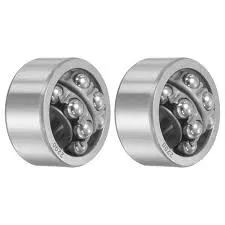
Dec . 04, 2024 19:23 Back to list
bearing 6209 dimensions
Understanding the Dimensions of Bearing 6209
Bearings are crucial components in various machines, facilitating smooth rotary or linear movement while minimizing friction. Among the various types available, the 6209 bearing is particularly popular due to its versatility and robust design. This article delves into the dimensions, characteristics, and applications of the 6209 bearing, providing a comprehensive overview for those interested in understanding this essential mechanical element.
Dimensions Overview
The 6209 bearing belongs to the series of deep groove ball bearings, which are among the most common types of bearings used in machinery. The dimensions of the 6209 bearing typically include
- Inner Diameter (ID) 45 mm - Outer Diameter (OD) 85 mm - Width (W) 19 mm
These measurements underscore the design's adaptability for various applications, such as in electric motors, automotive components, and household appliances. The choice of sizes enables the 6209 bearing to handle different loads and speeds effectively.
Bearing Design and Structure
The construction of the 6209 bearing features an inner ring, an outer ring, a set of steel balls, and a cage that holds the balls in place. This design allows the bearing to accommodate both radial and axial loads, which is crucial in many applications. The steel balls help reduce friction, enabling smooth operation even at higher speeds.
Moreover, the 6209 bearing is often available with various seal and shield configurations. Bearings can come with rubber seals (2RS) or metal shields (ZZ), providing options for different environmental conditions. Rubber seals are preferable in dusty or dirty environments, while shields offer better speed capabilities and lower friction.
bearing 6209 dimensions

Material Composition
The materials used in the construction of the 6209 bearing also play a vital role in its performance. High-quality steel, often Chrome Steel (AISI 52100), is typically utilized due to its excellent hardness and wear resistance. Some high-performance applications may require stainless steel, which offers corrosion resistance but may have different mechanical properties.
The bearing's surface undergoes various treatments to enhance durability, such as heat treatment for optimal hardness and surface finishing techniques that reduce friction. This attention to material and processing ensures that the 6209 bearing can withstand the stresses of operational environments.
Applications of the 6209 Bearing
The versatility of the 6209 bearing makes it suitable for countless applications across different industries. In the automotive sector, it is commonly used in wheel hubs, transmissions, and engines, where reducing friction and wear is paramount for performance and longevity. In electric motors, the 6209 bearing supports the rotor, ensuring efficient operation and low noise.
Its application also extends to industrial machinery, where it helps maintain the precision of moving parts, including conveyors and pumps. Furthermore, household appliances such as washing machines and fans often utilize 6209 bearings to ensure reliable and quiet operation.
Conclusion
In conclusion, the 6209 bearing is a vital element in numerous mechanical systems, characterized by its specific dimensions and robust design. Its ability to accommodate both radial and axial loads, combined with varied sealing options and superior material composition, ensures that it can meet the demands of a wide range of applications. Understanding the dimensions and characteristics of the 6209 bearing is essential for engineers and technicians alike, as it helps in selecting the right bearing for specific needs, ultimately leading to improved efficiency and performance in machinery. Whether you are involved in manufacturing, maintenance, or design, familiarity with the 6209 bearing can enhance your work's quality and reliability.
Latest news
-
Premium Deep Groove Ball Bearings | High Speed & Reliability
NewsAug.29,2025
-
Durable Scaffolding Clamps - Secure & Reliable Tube Connectors
NewsAug.28,2025
-
Common Failures in Thrust Ball Bearings and Solutions
NewsAug.22,2025
-
How Tapered Roller Bearings Can Take Shock Loads
NewsAug.22,2025
-
Angular Bearings in High-Precision Spindles
NewsAug.22,2025
-
The Impact of Misalignment on Cylindrical Roller Bearing Performance
NewsAug.22,2025
